.jpg)
Back to Main Encylopaedia Contents
Plaza Theatre, Melbourne
.jpg)
The Plaza Theatre, which was below the Regent, opened on 10 May, 1929. It seated 1235 in its single-level Spanish-style auditorium, with its entrance adjacent to that of the Regent, in Collins Street.
.jpg)
"Tonight - is the night of all nights in the entire history of the motion picture industry. It marks the Gala Première of the World's most wonderful motion picture theatre, whose fame is already spread to the four corners of the earth.
Designed and created entirely by Australians, the Plaza is the crowning achievement of Hoyt's Theatres Ltd - and an achievement of which all Australia may be proud.
.jpg)
Photo: John Thiele collection
It opened as a "talkie" house, and, in contrast to the large Regent upstairs, where the films changed weekly, it was planned to accommodate a policy of long-running films.[Thorne, Ross, Cinemas of Australia via USA, p. 268] Although it was relatively small, it was a luxury theatre:
 "Following the recent practice of designing theatres in accordance
with the style of some particular period, the Plaza is Spanish in its
decorative scheme. Entrance from Collins Street is by way of
stairs leading to a court constructed after the manner of a Spanish
close. the floor simulates the rough paving of a courtyard, and on
one side a fountain pays. Through archways to the right is a
rockery with orange trees, and here furniture of the appropriate
Spanish period has been placed...
"Following the recent practice of designing theatres in accordance
with the style of some particular period, the Plaza is Spanish in its
decorative scheme. Entrance from Collins Street is by way of
stairs leading to a court constructed after the manner of a Spanish
close. the floor simulates the rough paving of a courtyard, and on
one side a fountain pays. Through archways to the right is a
rockery with orange trees, and here furniture of the appropriate
Spanish period has been placed...
The auditorium also is decorated in a Spanish scheme, in which atmosphere rather than any particular period is suggested. On the roof a variegated design in which red, yellow and green are prominent, gives an appearance of solidity, and the scheme is extended to the leather chairs, on the back of each of which is embossed a galleon. Four painted hangings also attract considerable attention. They are of black velvet, painted in rich oranges and lush greens, and depict four of the most colourful legends of Spain. Two copes are in purple velvet and damask, with gold brocades and embroidery, copies of old Spanish bishops' vestments. Two other hangings are copies of sixteenth century embroidery, said to be still hanging in a castle in Valencia. The four remaining panels are all heraldic in type. The 'talkies' provide their own accompaniment, and consequently an orchestra is unnecessary. An organ had been installed, however, to supplement the pictures when that is called for, and for solo items." [The Argus, 11 May, 1929]
The organ was not new. It had been sent from America on 16 September, 1927, as Opus 1730, for Hoyt's Regent Theatre in Sydney, where it was opened on 9 March, 1928, by Roy Devany. It was a Style F Wurlitzer, of two manuals and eight ranks of pipes. It was far too small for that large theatre, and was removed and replaced there by a 3/15 Wurlitzer.
Four additional ranks of pipes were sent out from America on 23 August, 1928, and the enlarged organ was sent to the Plaza, Melbourne. It was installed in two chambers, behind very elaborate grilles, at either side of the proscenium, with the console in the centre of the "orchestra pit":
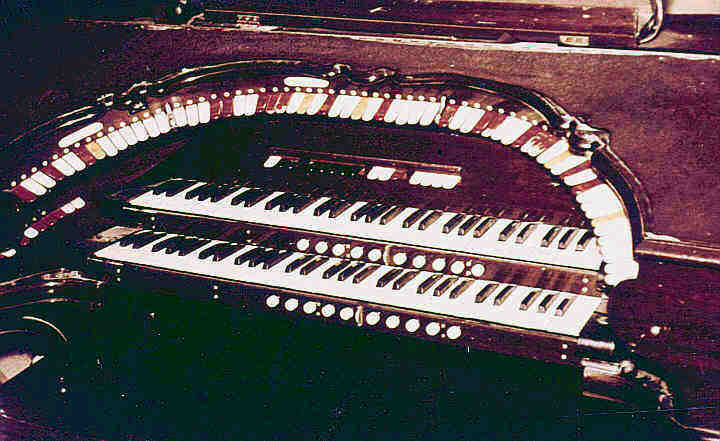
Photographer unknown
Main chamber (left): Diaphonic Diapason, Clarinet, Violin, Violin Céle ste, Flute (Chrysoglott)
Solo chamber (right): Trumpet (brass), Tuba Horn, Tibia Clausa, Orchestral Oboe, Kinura, Krumet, Vox Humana (percussions and traps)
During the 1930s, the Kinura was replaced by a Gamba, and the Krumet was exchanged for the Oboe Horn at the State Theatre, Melbourne. The source of the Gamba is not known.
This was the first time in Australia that the console of a divided Wurlitzer had been installed midway between the chambers, as there was no orchestra to cause it to be located at the side of the pit; thus the organist was able to enjoy a very satisfactory sound balance in this intimate theatre.
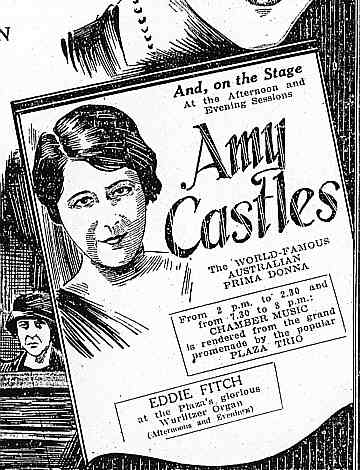
The opening organist was American Eddie Fitch (a Violin and piano duet also played classical music in the foyer on opening night). Fitch went to Sydney to open the Christie organ at the Plaza Theatre there on 11 April, 1930. He then returned to Melbourne, to the Regent, in May, 1930, where he was still playing in September, 1930. [Motion Picture Almanack, USA, September, 1930]
Organists who played subsequently at the Plaza include Victor Riley, Ian Davies and the organists at the Regent, interval times being arranged so that they could "double" between both theatres.
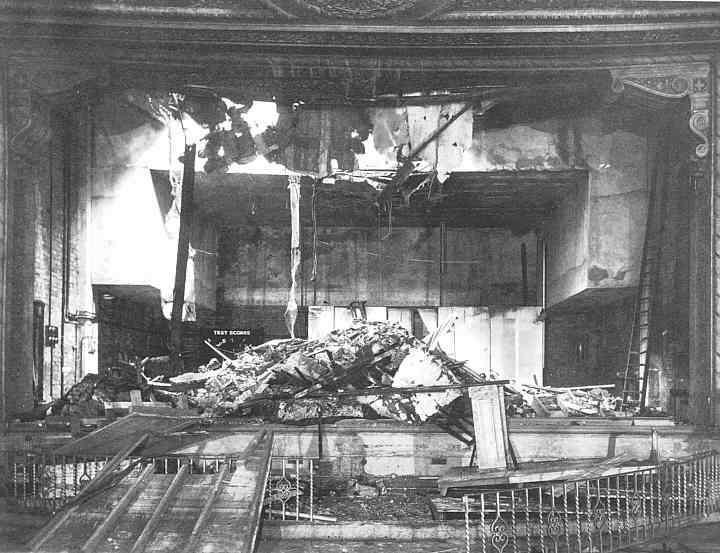
Photo: Regent Theatre archives
The Plaza was inundated with water hosed onto the Regent above when it burned down in 1945. Fortunately, damage to the organ was able to be repaired and the theatre re-opened after a few months.
During the 1950s, Ian Davies, who was officially resident at the Capitol Theatre, frequently played at the Plaza and broadcast the organ, perhaps the last such occasion being on 28 September, 1958. [Celebrating the Wyatt Hall 2/12 Wurlitzer, TOSA (SA), Adelaide, 1980, p. 2] While he was at the Plaza, the traditional organ bench was replaced for a time by what is technically known as a "Howard seat":
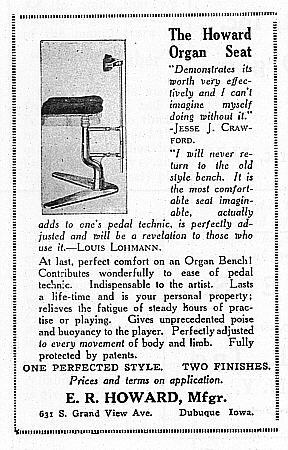 "The original stool with its curved legs to go over
the pedal-board was in a lot of cases replaced by
a Pedestal type, which had a padded seat split in
two, that moved with the organist's legs. This
amazing invention from the engineer's point of
view was fantastic, but from the organist's point
of view it was an absolute menace...
"The original stool with its curved legs to go over
the pedal-board was in a lot of cases replaced by
a Pedestal type, which had a padded seat split in
two, that moved with the organist's legs. This
amazing invention from the engineer's point of
view was fantastic, but from the organist's point
of view it was an absolute menace...
When I was appointed to Hoyt's Plaza, Melbourne, I suffered one of these vicious pieces of equipment, and one night when up playing before the audience, a locking pin in the stool must have carried away, and on taking my foot off the swell pedals to do some heel and toe work, I suddenly swung round and faced the audience, much to my horror, and couldn't get back again. The problem was solved on the manager seeing my predicament, rushed down the aisle, pushed the button and sent me back down into the pit. Next morning I had the old wooden stool put back, and the pedestal one, as far as I know, was dumped in Port Phillip Bay..." [Davies, Ian, "All About Organ Stools", TOSA News, TOSA (NSW), Sydney, June, 1985, p. 21]
In February, 1959, a new Cinerama screen and projection system were installed in the Plaza. The screen was well forward of the proscenium, in front of the pit and the organ chambers. Although the organ was no longer able to be played in public, it was still operable, and was used by organists playing at the Regent for practice between the Cinerama sessions, as Tony Fenelon recalls:
"Except for the dim light of a cleaner's lamp occasionally disturbing the darkness, backstage at the Plaza Theatre, Melbourne, was a deserted, pitch black world. Not all was silent, however, as the stillness was regularly broken by the powerful sound system accompanying the spectacular visual experience of Cinerama with its giant screen hiding from the audience the original and beautiful ornate proscenium of yesteryear.
Who, then would ever have suspected that also hidden away in the blackness and covered with an old dusty curtain, was a sadly neglected treasure. Imagine sweeping this shabby cover aside to reveal a two-manual Wurlitzer console which, in spite of its derelict state, was still capable of commanding a majestic sound from the twelve ranks of pipes installed in the original chambers!
In the years from 1964 to 1969, it was the Wurlitzer "upstairs" in the Regent Theatre that claimed the limelight and became my first love, while the neglected 2/12 sat patiently in the gloom awaiting better times. Perhaps not so neglected, however, as I spent countless hours at that console, practising to a deserted theatre in the many hours between Cinerama performances. It was a sweet sound that permeated back to the secluded console, and certainly a contrast to the all-enveloping sound from the nineteen ranks upstairs!" [Fenelon, Tony, "The Wurlitzer Downstairs", Celebrating the Wyatt Hall 2/12 Wurlitzer, TOSA (SA), Adelaide, 1980, p. 8]
On 13 September, 1968, Hoyt's called for tenders to purchase the organ. On 4 December, 1968, it was announced that the South Australian Division of TOSA's bid had been successful. Removal commenced on 7 January, 1969, under the direction of Penn Hughes from Sydney, and shortly thereafter the organ travelled by rail to Adelaide, where it was placed in temporary storage at Mile End. [Inaugural Concert Programme, Pulteney Grammar School, TOSA (SA), Adelaide, 12 December, 1970, p. 6]
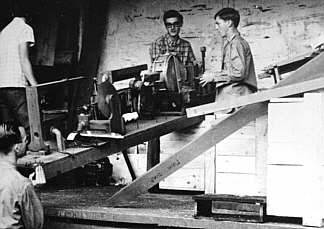
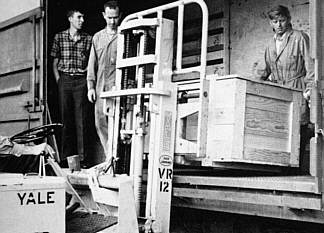
The Plaza organ on the move by train and truck to safe storage in Adelaide. A number of TOSA identities can be seen, including organists John Atwell and Penn Hughes (photos: John Thiele)
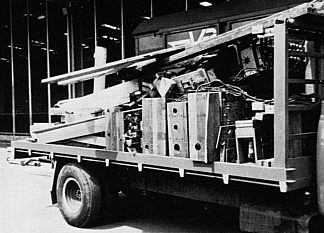
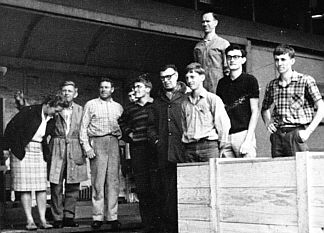
The instrument was installed by TOSA (SA) in Pulteney Grammar School's Wyatt Hall, where it was opened by Knight Barnett and Tony Fenelon on 12 December, 1970.
The Plaza Theatre closed in 1969, and while controversies raged as to the future of both it and the Regent Theatre, shops were constructed within it. When the decision was finally taken to restore the Regent Theatre, those plans included the reconstruction of the Plaza, much of which had been destroyed over the years.
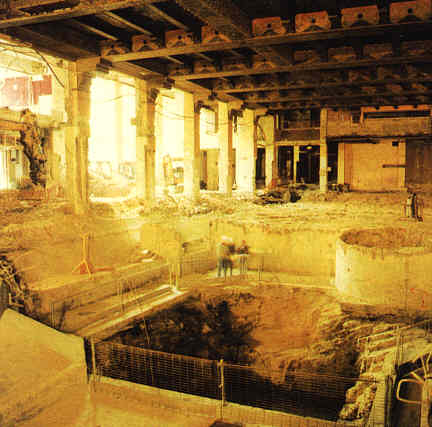
The extent of the recosntruction necessary to restore the Plaza can be judged from this illustration of work in progress
Lauritz Photo: Regent Theatre archives
The Plaza was rebuilt as a ballroom and banqueting hall, rather than as a cinema. The rebuilt Plaza does not house an organ; however, the same impeccable job as was achieved in returning the Regent to better than original state resulted in the Plaza. Both buildings were re-opened on the same night, 17 August, 1996.
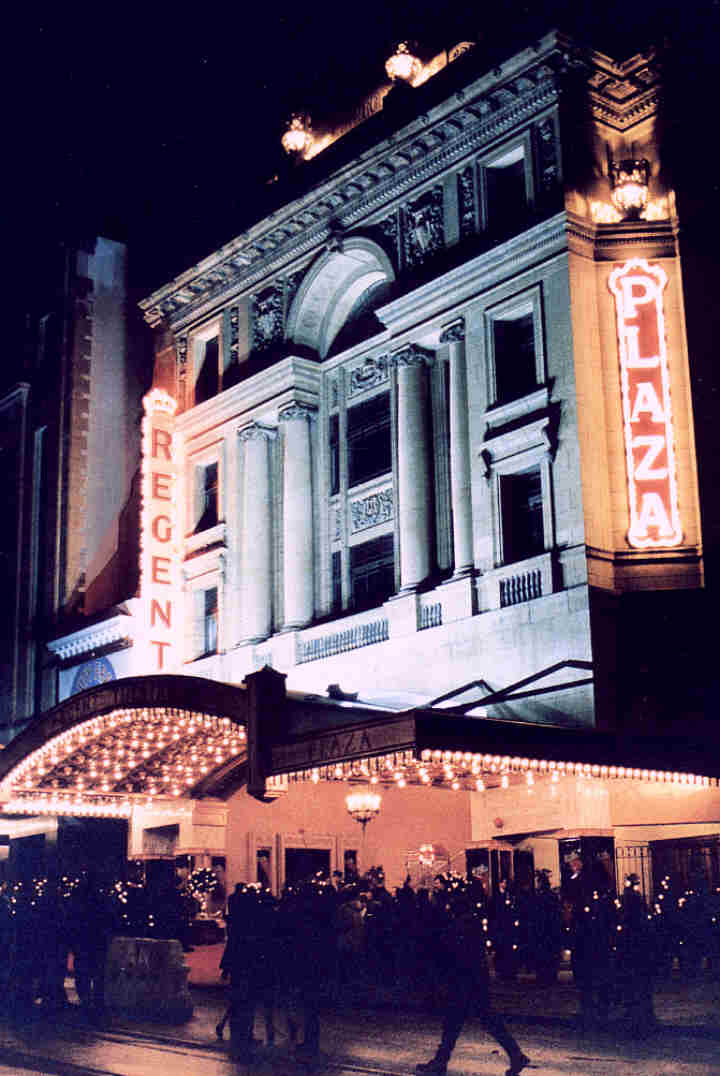
Make your way downstairs to the Plaza...
.jpg)
.jpg)
Photos: Regent Theatre archives